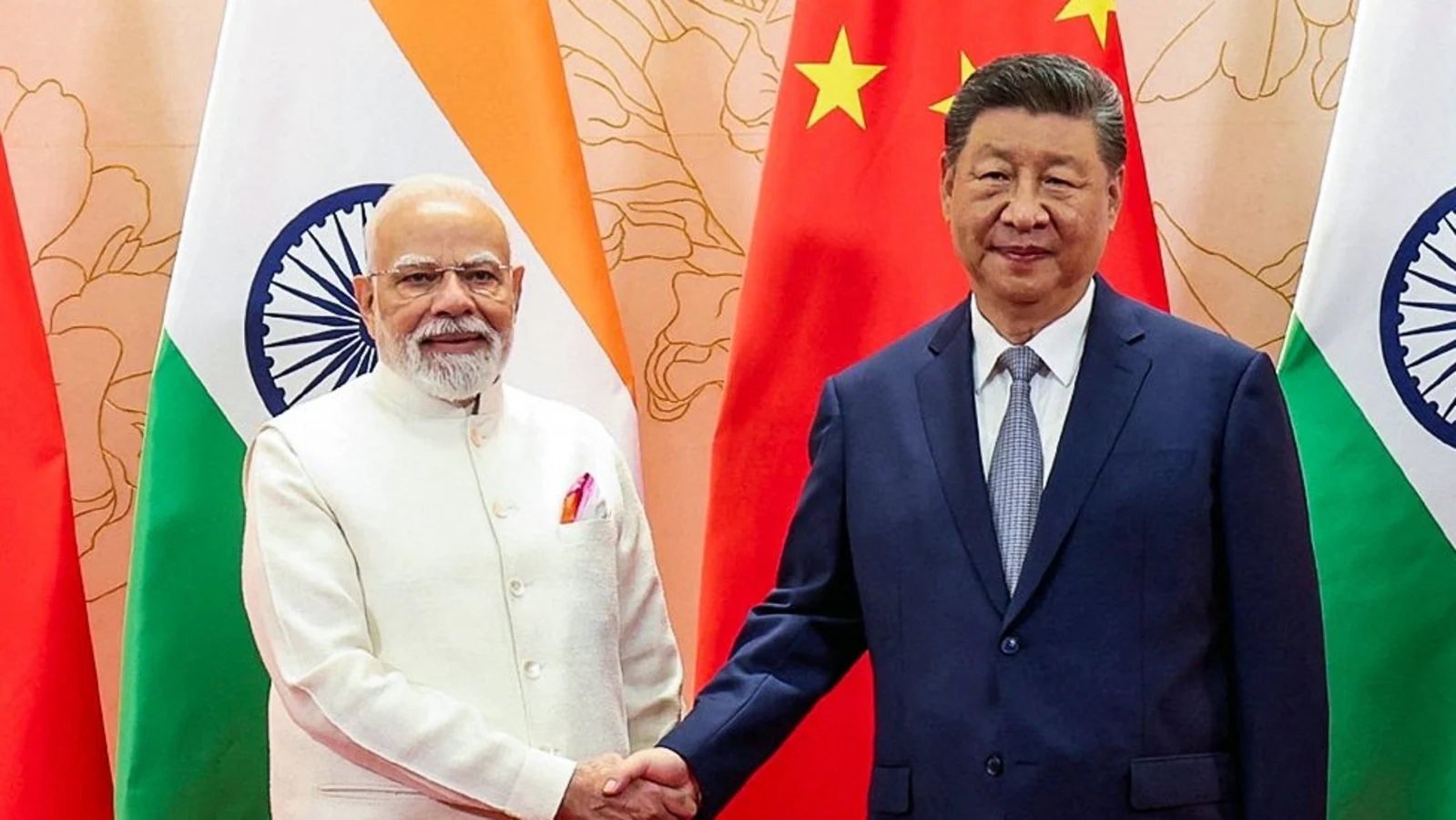
The Return of Chindia
Modi–Xi Meeting and the Future of Sino-Indian Relations
GK & Current Affairs for CLAT | CLAT Current Affairs 2026
Powered by CLAT Gurukul – Best online coaching for CLAT
Introduction
India–China relations have long been marked by cooperation and confrontation, alternating between strategic partnerships and sharp border conflicts. The term “Chindia”—coined to signify the potential synergy between Asia’s two largest economies—captures both the promise and pitfalls of this complex relationship.
In September 2025, Prime Minister Narendra Modi visited Beijing for the first time in seven years and met Chinese President Xi Jinping on the sidelines of the Shanghai Cooperation Organisation (SCO) summit. The meeting did not lead to dramatic breakthroughs, but it marked a symbolic shift from confrontation to conversation, reopening channels of dialogue after years of silence following the Galwan Valley clashes of 2020.
For CLAT Current Affairs 2026, this issue is significant as it merges international relations, trade law, border disputes, and multilateral diplomacy. Students preparing with the best online coaching for CLAT or through online coaching for CLAT must grasp both the geopolitical context and legal dimensions of Sino-Indian relations.
Why in News
- Modi visited Beijing in September 2025, his first visit in 7 years.
- Met Xi Jinping on the sidelines of the SCO Summit.
- Meeting seen as a deliberate pivot from confrontation to dialogue.
- Comes after Galwan Valley clash (2020) where 20 Indian soldiers were killed.
- Symbolizes attempts at resetting ties while mistrust and asymmetry persist.
Point-wise Summary of the Article
- Background: The Shadow of Galwan
- 2020 Galwan clash (20 Indian soldiers killed) froze ties.
- Trade slowed, flights ceased, and border tensions escalated.
- “Chindia” vision of synergy was shelved.
- Symbolism of Modi–Xi Meeting
- Marked a pivot to dialogue after years of disengagement.
- Indian pilgrims allowed to Tibet again; direct flights resuming.
- Border patrols resuming under cautious engagement.
- Historical Context
- India was among first nations to recognize People’s Republic of China.
- Both engaged in Asian Relations Conference (1947) and Bandung Conference (1955).
- “Hindi–Chini Bhai Bhai” era of optimism collapsed after the 1962 war.
- Current Asymmetries
- China’s economy nearly 5 times larger than India’s.
- Massive trade deficit persists.
- Border remains unsettled; status quo ante of April 2020 not restored.
- Geopolitical Shifts
- Both nations stress need for strategic autonomy and multipolarity.
- Publicly criticize US-led “bullying”.
- Yet mistrust persists: India wary of China’s influence in South Asia and Indo-Pacific.
- Outcomes of Meeting
- No major agreements but reaffirmation of principle that differences should not prevent cooperation.
- Dialogue emphasizes self-reliance and partnership in specific areas like trade, tourism, and cultural exchanges.
- Challenges Ahead
- Trust deficit remains high.
- Border dispute unresolved, patrolling fragile.
- Economic asymmetry creates dependency risks.
- Both sides face domestic political pressures limiting concessions.
Explanation of Peculiar Terms (Notes)
- Chindia:
Portmanteau of China + India, coined to reflect potential economic and strategic synergy. - Galwan Valley Clash (2020):
Deadly skirmish in Ladakh between Indian and Chinese troops; worsened bilateral ties. - SCO (Shanghai Cooperation Organisation):
Regional grouping led by China and Russia, with India, Pakistan, and Central Asian nations as members. - Status Quo Ante:
Latin term meaning “the way things were before.” In border context, refers to restoring pre-Galwan positions. - Bandung Conference (1955):
Asian-African conference promoting decolonization and cooperation among newly independent nations.
CLAT-Oriented Analysis
- Relevance for CLAT Current Affairs 2026
- India–China ties may appear in passage-based international relations questions.
- Issues of sovereignty, treaties, and trade law are highly examinable.
- Legal Dimension
- Border disputes tie into international law principles of sovereignty and territorial integrity.
- Trade imbalances linked to WTO norms and bilateral agreements.
- SCO framework highlights multilateral diplomacy under international law.
- Economic Implications
- India’s trade deficit with China impacts manufacturing and Atmanirbhar Bharat.
- Dependence on Chinese imports in electronics and pharmaceuticals persists.
- Strategic Dimension
- China’s rise challenges India’s influence in Asia.
- India counters through alliances like Quad (India, US, Japan, Australia).
- SCO provides a forum where India balances rivalry with cooperation.
- Possible CLAT Questions
- What does “Chindia” signify?
- What was the significance of the Galwan Valley clash?
- What is the SCO, and why is it important?
- What does “status quo ante” mean in border disputes?
Conclusion
The Modi–Xi meeting in Beijing (2025) may not have produced landmark agreements, but it is a symbolic turning point. It suggests that despite deep mistrust, India and China are willing to re-engage in dialogue.
The concept of “Chindia”—though dented by conflict and asymmetries—remains relevant in a world where Asia’s two giants must find ways to coexist, compete, and occasionally cooperate.
For CLAT Current Affairs 2026, this topic highlights how international law, diplomacy, and economic policy converge in shaping India’s foreign relations. Students preparing with the best online coaching for CLAT or through online coaching for CLAT should view India–China ties as a dynamic case study in global geopolitics.
This Blog is Powered by CLAT Gurukul — India’s Leading Law Entrance Prep Platform
At CLAT Gurukul, we believe in empowering future legal minds with the right blend of knowledge, strategy, and mentorship. This blog is a reflection of our commitment to quality content that not only helps aspirants stay updated but also sharpens their conceptual clarity.
Why CLAT Gurukul?
- Personalized Mentorship by Top Legal Educators
- Comprehensive Study Materials & Legal Updates
- Daily Practice Sets, Mocks & Performance Tracking
- Result-Oriented Strategy for CLAT, AILET, and CUET
Whether you’re reading this article to deepen your understanding or to stay ahead in your exam prep — you’re already one step closer with CLAT Gurukul by your side.
Join thousands of successful aspirants who trusted CLAT Gurukul and cracked India’s top law entrance exams.
Visit https://www.youtube.com/@CLATGurukul/shorts to learn more or speak to our experts now!
Note from CLAT Gurukul
At CLAT Gurukul, we are committed to providing free CLAT study material, including CLAT current affairs, legal reasoning practice sets, general knowledge updates, logical reasoning questions, English comprehension exercises, and more — all curated by top mentors.
Our blog section is regularly updated with high-quality CLAT content tailored to match the evolving pattern of the CLAT UG exam. Whether you’re looking for CLAT 2026 current affairs, CLAT legal reasoning passages, or mock practice sets, we have you covered.
We believe in open-access learning and will continue to publish free CLAT preparation resources to help serious aspirants succeed.
Explore more free content under categories like:
Best online coaching for CLAT, CLAT current affairs, CLAT GK updates, CLAT legal updates, CLAT logical reasoning, and CLAT English preparation.
For structured learning, daily mocks, and expert mentorship, visit https://www.youtube.com/@CLATGurukul/shorts — the Best CLAT Coaching in Patna and India’s most trusted platform for CLAT online coaching.




